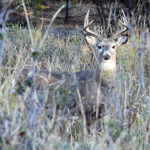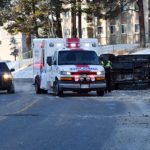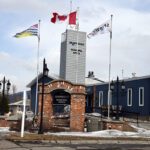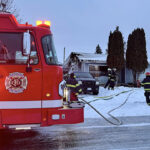Home »

BCEBC recommendations will impact local ridings
The BC Electoral Boundaries Commission (BCEBC) has published its final report with recommendations to the Legislative Assembly for changing British Columbia’s provincial electoral districts, and there are several potential changes coming to the East Kootenay’s two ridings.
The Commission’s recommendations include a proposal to create six additional electoral districts in areas of rapid population growth, bringing the total number of provincial ridings to 93 from the current 87.
“Our proposal to increase the number of electoral districts reflects our growing province,” said Justice Nitya Iyer, chair of the Commission.
“We do not recommend reducing the number of ridings in more sparsely populated areas of the province because doing so would undermine effective representation.”
The Commission recommends adjustments to the boundaries of 72 electoral districts and changes to 41 electoral district names based on the geographic, demographic, and communication and transportation considerations set out in the Electoral Boundaries Commission Act.
“We learned a great deal from our initial and final public consultations,” said Iyer.
“In total, we held 63 public meetings in 44 communities and received more than 2,000 submissions. We wish to thank wholeheartedly the many British Columbians who took the time to share their views with us. Your input was invaluable in shaping our understanding of our complex and diverse province.”
The publication of the final report marks the end of the Commission’s process. It is now the responsibility of the Legislative Assembly to decide whether to accept all, some or none of the Commission’s recommendations.
The BCEBC report notes, “The Kootenays’ four electoral districts lie in the southeast corner of the province. This area is dominated by mountain ranges and large bodies of water creating challenges for transportation. The population of the Kootenays is growing more slowly than the provincial average, and the populations of the current ridings of Columbia River-Revelstoke and Nelson-Creston fall more than 25% below the electoral quotient.
“Many people expressed concern that we might propose reducing the number of electoral districts in this area. Residents pointed to travel and communication barriers that currently impede effective representation. Some stressed the different identities of the East and West Kootenay, and others suggested changes to recognize links between specific communities.
“Following our mandate, we first considered whether it made sense to propose reducing the number of ridings. It quickly became clear that fewer ridings would create even greater barriers to effective representation. In addition to the challenging transportation routes, some of which require ferry travel, the area faces severe seasonal weather. Internet and cellular connectivity are limited outside of the larger centres, and we heard that these networks often do not extend to rural homes. We conclude that effective representation for this area of the province requires four electoral districts.
“Our proposals adjust the boundaries of each of the area’s ridings, reducing the population differences and bringing the population of each within the usual deviation range. We recommend renaming Kootenay West as Kootenay-Monashee, Nelson-Creston as Kootenay Central, and Kootenay East as Kootenay-Rockies,” the recommendation report states.
“We propose moving the communities of Nakusp, New Denver and Silverton from Kootenay-Monashee to Kootenay Central. This brings the population of Kootenay Central within the usual deviation range and keeps the communities in the northern part of the Slocan Valley together.
“The consequence of moving these communities into Kootenay Central is that the population of Kootenay-Monashee falls below the usual deviation range. To address this, we considered moving Christina Lake into Kootenay-Monashee. However, the strong connections between Christina Lake and other Boundary region communities and the transportation challenges for Christina Lake residents attempting to access their Kootenay-Monashee MLA persuaded us that this was not a good solution.
“Instead, we propose moving the Monashee area, including Cherryville, into the Kootenay-Monashee riding. Cherryville shares a transportation corridor with Upper Arrow Lakes communities. This boundary adjustment also better balances the population of Kootenay-Monashee with the adjacent riding centred on Vernon.
“While we explored moving Revelstoke and Golden from Columbia River-Revelstoke into the electoral district of Salmon Arm-Shuswap, we do not propose this change because of the challenge posed by the limited transportation options and the mountain pass between these communities.
“Instead, we adjust the boundary between Kootenay-Rockies and Columbia River-Revelstoke ridings by moving the western outskirts of Cranbrook into Columbia River-Revelstoke. This balances the populations between these neighbouring electoral districts, and the boundary follows municipal borders.”
Columbia River-Revelstoke
“This electoral district stretches along the Columbia Valley. It includes Kimberley, Invermere, Canal Flats, Radium Hot Springs and Golden. To the west it includes the communities of Revelstoke, Trout Lake and Galena Bay and to the east it extends along Highway 1 to Field. Its boundaries are defined by the Alberta border in the east, and the Columbia Shuswap Regional District in the north and west. The riding’s southern boundary extends to the western outskirts of Cranbrook along Hidden Valley Road,” the report notes.
Kootenay-Rockies (Kootenay East)
“This riding includes communities along Highways 3 and 43 such as Cranbrook, Sparwood, Fernie, Hosmer, Elko, and Elkford. It extends west to the height of land of the Moyie Mountain Range and north along the boundaries of the Regional District of East Kootenay Electoral Areas A and C. Its eastern boundary is the Alberta border and its southern boundary is the Canada-U.S. border.”
View the Commission’s final report and proposed boundaries.
View an interactive map with current and proposed electoral boundaries.
Lead image: The proposed riding boundary changes would see Elizabeth Lake in Cranbrook end up in Columbia River-Revelstoke, while Confederation Park immediately adjacent Elizabeth Lake will remain in Kootenay-Rockies (currently Kootenay East). e-KNOW file photo
e-KNOW







